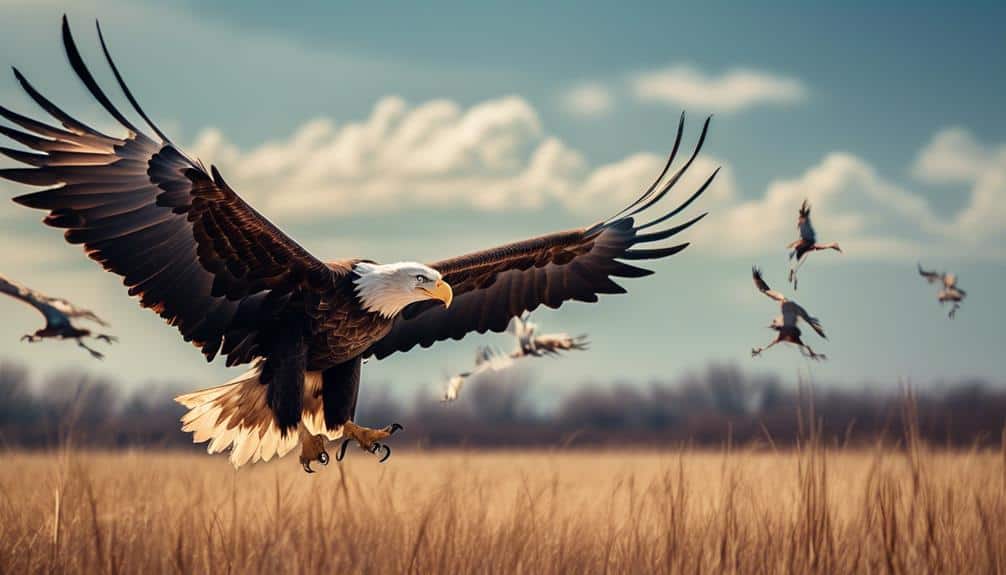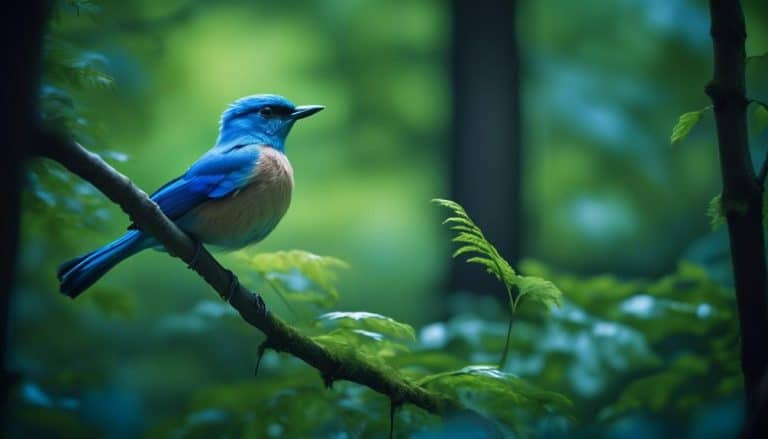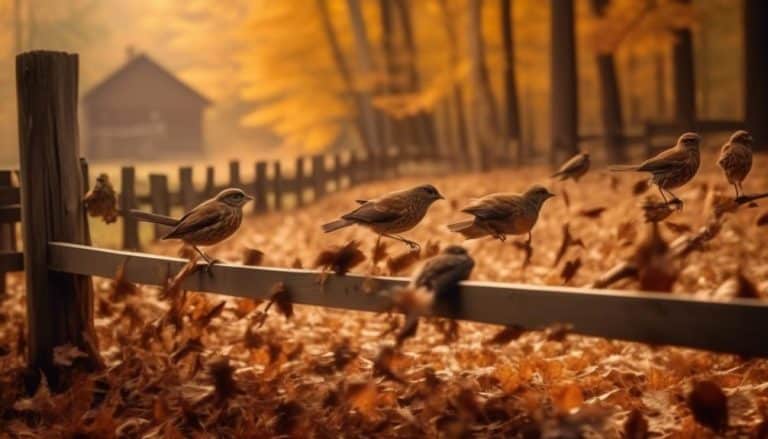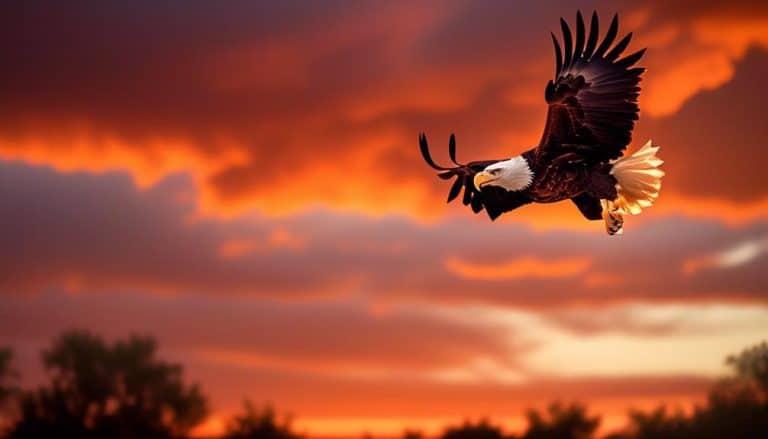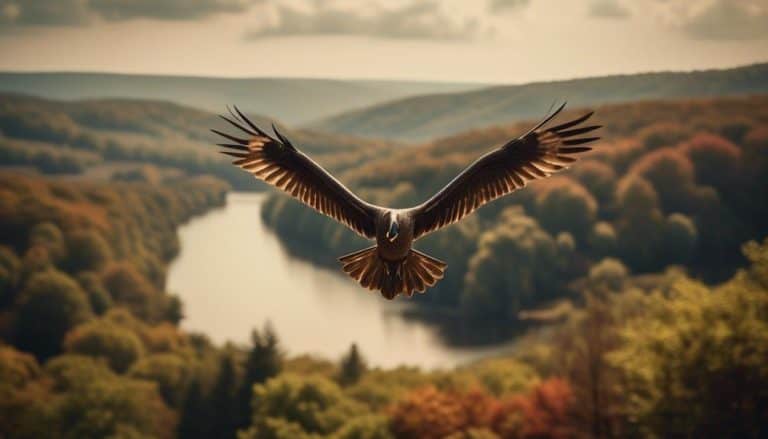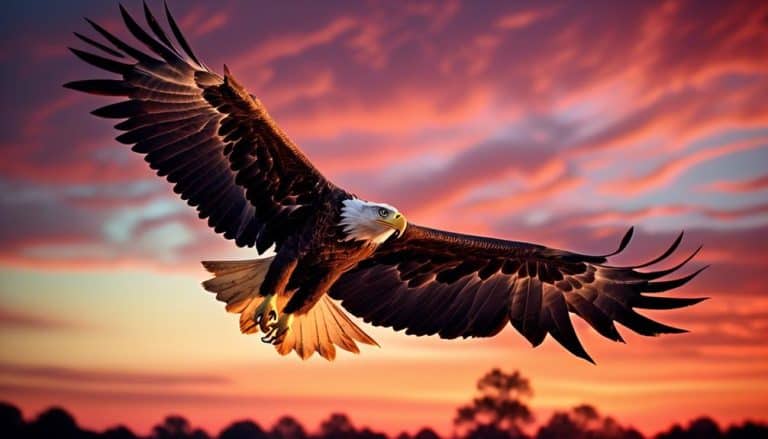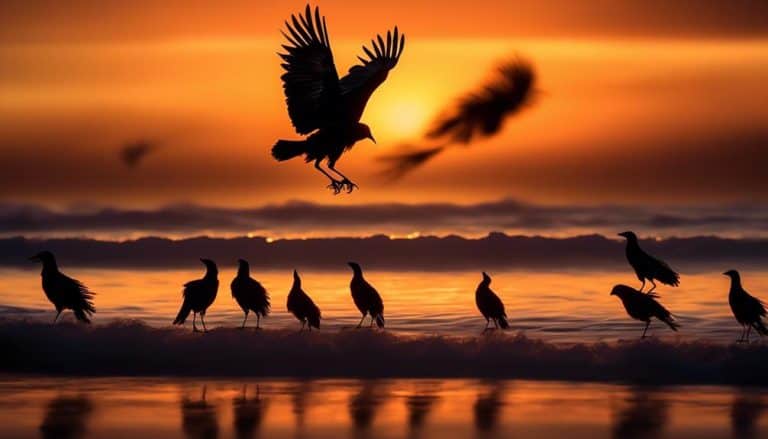As an avid bird-watcher in Illinois, I am fascinated by the plethora of Large Birds of Illinois that grace the state’s skies. From the majestic Bald Eagles, soaring with strength and grace, to the elegant Great Blue Herons, standing tall in their search for a tasty meal.
But it doesn’t stop there – the Sandhill Cranes wander our prairies, their distinctive calls echoing across the land. And let us not forget the magnificent Trumpeter Swans, gliding gracefully on the shimmering waters. Oh, but there’s more!
With their stealth and predatory prowess, the Red-tailed Hawks silently survey their domain from above. Are you curious to know more? Well, let’s embark on a journey through the skies of Illinois and discover the wonders these large birds offer.
Bald Eagles in Illinois
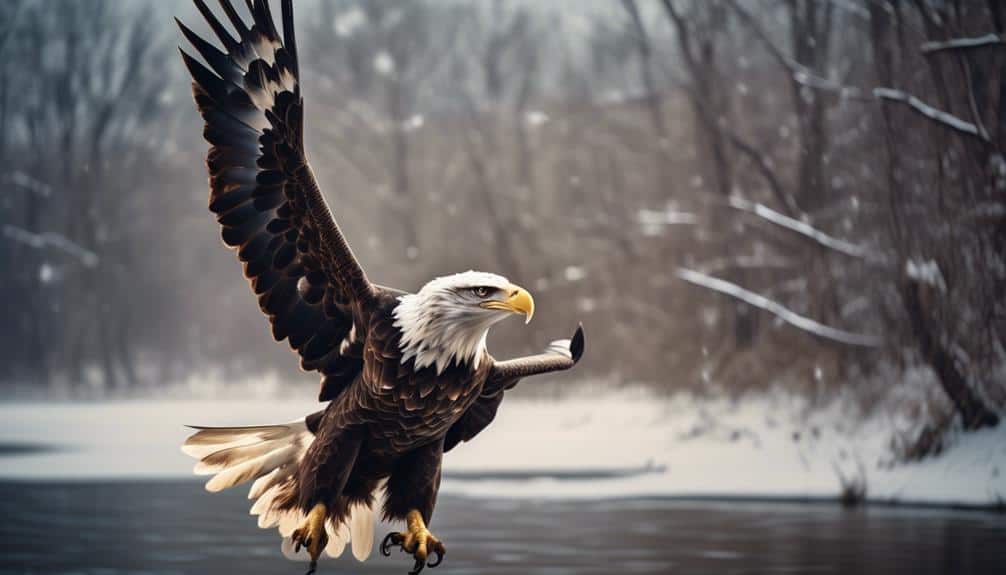
Bald eagles can be found in abundance throughout the state of Illinois. These majestic birds have remarkably recovered in recent years thanks to dedicated bald eagle conservation efforts. Illinois has numerous nesting sites where these birds build their nests and raise their young.
Bald eagles in Illinois typically begin nesting in late winter or early spring. They prefer to build their nests near large bodies of water, such as rivers, lakes, or reservoirs. The nests are usually in tall trees, giving the eagles a clear view of their surroundings and easy access to food sources.
The nesting habits of bald eagles are fascinating. They construct large nests using branches, twigs, and other materials, often adding to them year after year. These nests can reach impressive sizes, measuring up to ten feet in diameter and weighing thousands of pounds. Once a pair of eagles establishes a nest, they’ll return to it year after year, often adding new materials to strengthen and expand it.
Bald eagle conservation efforts have played a crucial role in preserving and protecting these birds in Illinois. Through habitat conservation, nest monitoring, and public education, these efforts have helped increase the population of bald eagles and ensure their survival for future generations.
Great Blue Herons of Illinois
While Illinois is renowned for its thriving population of bald eagles, the Great Blue Heron is another magnificent bird species that can be observed in abundance throughout the state. These majestic birds are known for their distinctive appearance and fascinating behavior.
- The Great Blue Heron is a tall and slender bird, standing around 4 feet tall with a wingspan of up to 6 feet.
- They’re primarily found near bodies of water such as rivers, lakes, and marshes, where they can easily find their preferred diet of fish, amphibians, and small mammals.
- Great Blue Herons are solitary birds often seen standing motionless in shallow water, patiently waiting for their prey to come within striking distance.
- When hunting, they use their sharp beaks to swiftly snatch their prey from the water, displaying impressive precision and agility.
These birds also exhibit interesting social behavior, particularly during the breeding season. They gather in large colonies known as heronries, building nests high in trees. The males perform elaborate courtship displays, including stretching, bowing, and offering sticks to the female. Once the pair bonds, they work together to build a nest and raise their young.
Sandhill Cranes in the Prairie State
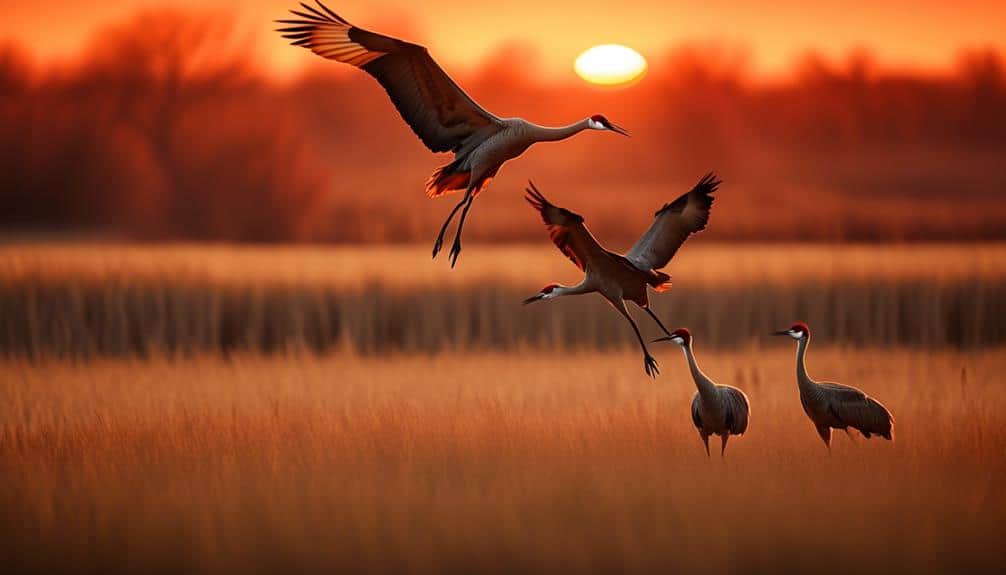
Sandhill Cranes, a fascinating bird species, can be found in abundance throughout Illinois. These large, elegant birds are known for their distinctive call and graceful appearance. They are a majestic sight with a wingspan of up to seven feet and a height of around four feet. The population of Sandhill Cranes in Illinois has been steadily growing, thanks to conservation efforts and the preservation of their natural habitats.
One interesting aspect of Sandhill Crane’s behavior is their mating rituals. During the breeding season, which typically occurs between March and May, these birds perform elaborate dances to attract a mate. The male and female cranes engage in synchronized movements, including bowing, jumping, and wing flapping. These displays serve as courtship and help establish and strengthen pair bonds.
To provide a more comprehensive view, the table below highlights some key information about Sandhill Cranes in Illinois:
| Aspect | Details |
|---|---|
| Habitat | Wetlands, marshes, and grasslands |
| Diet | Omnivorous, feeding on insects and plants |
| Migration | Some populations migrate long distances |
| Conservation status | Least Concern (IUCN Red List) |
The Magnificent Trumpeter Swans
The Trumpeter Swan, a magnificent bird species, is an iconic presence in the wetlands and lakes of Illinois. These graceful creatures are known for their distinctive trumpet-like call and impressive wingspan, reaching up to eight feet.
Here are some key points about Trumpeter swans:
- Trumpeter swan conservation efforts: Due to overhunting and habitat loss, Trumpeter swans were once on the verge of extinction. However, thanks to dedicated conservation efforts, their population has remarkably recovered. Conservation organizations have worked tirelessly to protect their habitats, regulate hunting, and reintroduce captive-bred swans into the wild.
- Trumpeter swan breeding habits: Trumpeter swans are monogamous birds, forming lifelong pair bonds. They typically breed in the spring, constructing large nests of vegetation near water bodies. The female lays around four to six eggs, which both parents take turns incubating for about 32 to 37 days. Once hatched, the cygnets are cared for by their parents and will stay with them until the following breeding season.
- Habitat requirements: Trumpeter swans prefer nesting in shallow wetlands and lakes with abundant aquatic vegetation. These habitats provide suitable nesting sites and a rich food source for aquatic plants, insects, and small invertebrates.
- Importance to ecosystems: Trumpeter swans are vital in maintaining wetland ecosystems. By feeding on underwater vegetation, they help control its growth, preventing overcrowding and maintaining the balance of the ecosystem. Their nesting and foraging activities also create habitats for various other species, contributing to overall biodiversity.
Red-tailed Hawks: Illinois’ Stealthy Predators
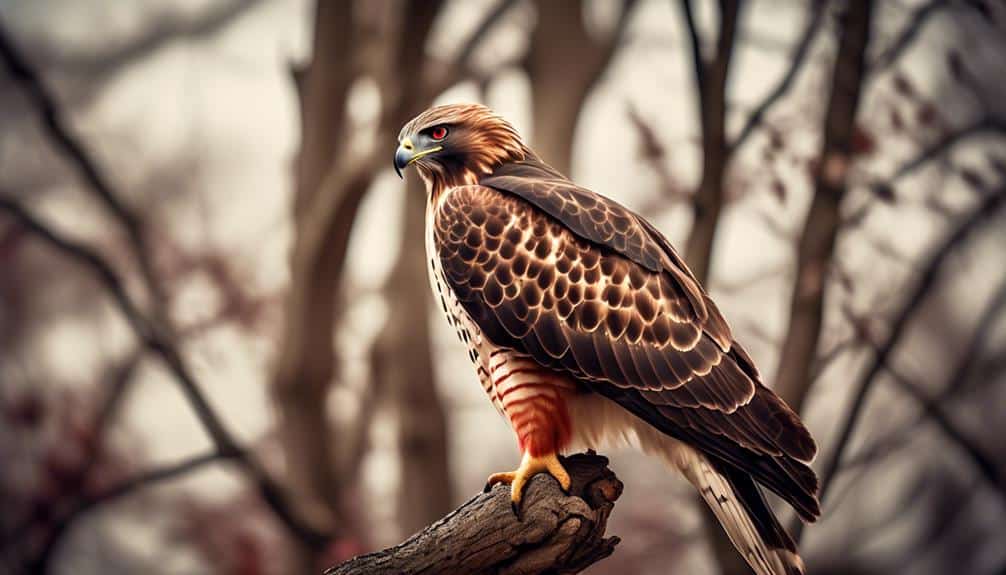
Red-tailed Hawks, the stealthy predators of Illinois, are highly skilled hunters who play a crucial role in maintaining the balance of the ecosystem. These magnificent birds are known for their distinctive red tail feathers, which help with identification. Red-tailed Hawks are often seen soaring high in the sky, scanning the ground for potential prey. They’ve excellent eyesight, allowing them to spot their targets from great distances.
One fascinating aspect of Red-tailed Hawks is their migration patterns. These birds are known to migrate during the spring and fall, traveling long distances to find suitable breeding and wintering grounds. Illinois is an important stopover point for these hawks during their migration, providing ample food and resting opportunities.
When it comes to hunting, Red-tailed Hawks employ various techniques to capture their prey. They’re skilled at soaring and scanning for small mammals, birds, and reptiles. Once they spot their target, they swoop down with incredible speed and precision. Their sharp talons and powerful beaks allow them to efficiently grasp and dispatch their prey.
Red-tailed Hawks are also known to engage in cooperative hunting, where multiple individuals work together to capture larger prey. This strategy increases their chances of success and demonstrates their intelligence and adaptability.
Frequently Asked Questions
Are Any Other Large Bird Species Found in Illinois Apart From the Ones Mentioned in the Article Sections?
I’m unsure if other large bird species exist in Illinois besides those mentioned in the article sections. I would need more information to provide a definitive answer.
What Is the Population Status of These Large Bird Species in Illinois?
Various factors influence the population status of large bird species in Illinois. Understanding population trends, threats, and challenges is crucial for their conservation. Let’s explore the details of these aspects.
Where Are the Best Places in Illinois to Spot These Large Bird Species?
The best time to spot large birds in Illinois is during their migration season. Tips for birdwatching in Illinois include visiting nature reserves and wetlands where these birds often gather.
Are Any Conservation Efforts or Programs in Place to Protect These Large Bird Species in Illinois?
Conservation efforts and breeding programs are in place to protect large bird species in Illinois. These programs aim to preserve their habitats, monitor population numbers, and educate the public about the importance of conservation.
Do These Large Bird Species in Illinois exhibit any Interesting or Unique Behaviors?
Unique mating rituals and feeding habits are observed in large bird species in Illinois. These behaviors are fascinating to study and provide valuable insights into their reproductive strategies and ecological roles within the ecosystem.
Conclusion
As I observed the majestic birds soaring through the Illinois skies, I couldn’t help but be captivated by their grace and power.
From the striking Bald Eagles to the elegant Great Blue Herons, Illinois is a haven for large bird species.
The Sandhill Cranes and Trumpeter Swans add a touch of beauty to the prairies, while the Red-tailed Hawks silently hunt their prey.
Each bird’s unique story leaves me in awe of our state’s natural wonders.

